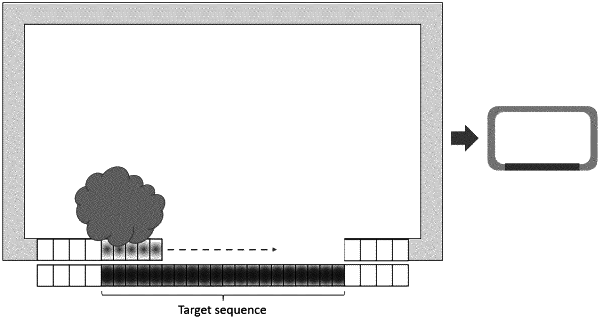| CPC C12Q 1/6841 (2013.01) | 20 Claims |

|
1. A method of detecting an RNA molecule in a cell or tissue, said method comprising:
contacting a cell or tissue with a polynucleotide probe and hybridizing a first hybridization sequence of the polynucleotide probe to a first target sequence of the RNA molecule, and hybridizing a second hybridization sequence of the polynucleotide probe to a second target sequence of the RNA molecule, wherein said RNA molecule comprises a target sequence between the first target sequence and the second target sequence;
extending the polynucleotide probe along the target sequence to generate a complement of the target sequence, and ligating the complement of the target sequence to the polynucleotide probe thereby forming a circular oligonucleotide;
extending an amplification primer hybridized to the circular oligonucleotide with a polymerase to generate an extension product comprising the target sequence; and
hybridizing a sequencing primer to the extension product and sequencing the target sequence in the cell or tissue, thereby detecting the RNA molecule.
|